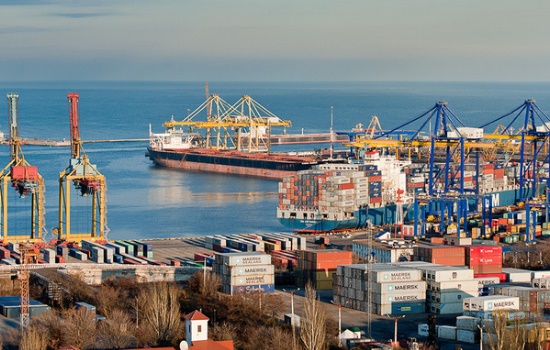Digital integration: Customs and the Sea Ports Authority combine information systems
15 May 08:49
The State Customs Service of Ukraine and the State Enterprise “Ukrainian Sea Ports Authority” have signed an agreement on information cooperation. This was reported by the State Customs Service, "Komersant Ukrainian" reports.
The agreement provides for the integration of the Single Window for International Trade with the Logistics Port System (DocPort). This should ensure automatic data exchange between the systems without duplication and manual input.
The integration project involves two stages
At the first stage of integration, information on ship calls from DocPort will automatically be transferred to the customs information system. This will allow cargo operations to begin without waiting for manual entry of ship call data into the Single Window for International Trade.
At the second stage, it is planned to organize the exchange of data on the completion of customs clearance of cargoes that arrived at the seaport on foreign vessels, passed customs clearance and will be exported through checkpoints controlled by the seaport administration. At the same time, the exit pass will be issued without paperwork and human intervention.
What are the expected results
Time savings on ship clearance can be up to 6 hours. Accordingly, shipowners will be able to save money.
It is also expected to increase port capacity and thus improve foreign trade. According to the Seaports Authority, the throughput is expected to increase by 3-7% without any new infrastructure costs.
Maximum transparency will also be ensured. And responsibility, as each action will be accompanied by an electronic signature of the responsible employee.
According to the Ukrainian Sea Ports Authority, the integration of information systems is a real step towards the digitalization of Ukrainian port logistics in line with EU and International Maritime Organization standards.
Ukrainian ports are operating at record levels
Ukrainian seaports set a new record in 2024, handling 97.2 million tons of cargo. This is significantly higher than in 2023, which was 62 million tons. These are the data of the State Enterprise “Ukrainian Sea Ports Authority”.
The main drivers of growth were grain and ore cargo, which accounted for 60.3 million tons and 18.5 million tons, respectively.
The Danube ports played an important role in supporting exports, handling 17.3 million tons of cargo.
One of the most important achievements was the stable functioning of the Ukrainian Sea Corridor.
How did the ports of Greater Odesa perform?
Since the launch of the Ukrainian Sea Corridor, Odesa ports have handled 120 million tons of cargo, of which 76 million tons are agricultural products. In 2025 alone, more than 28 million tons were transported, including more than 15 million tons of grain.
Thanks to the Ukrainian Maritime Corridor, domestic producers have maintained their competitiveness in global markets and ensured stable foreign exchange earnings for the domestic economy. The NBU estimates that up to 30% of steel exports go through this route. For the agricultural sector, the economic effect is estimated at 15-20% of added value.
Ukraine’s maritime corridor has enabled exports to 53 countries, including Kenya, Djibouti and Bangladesh.









